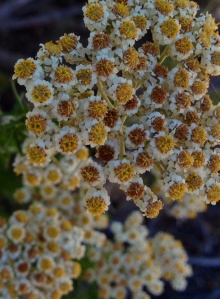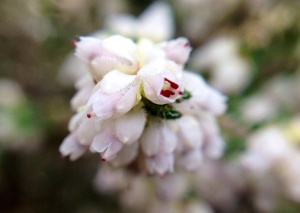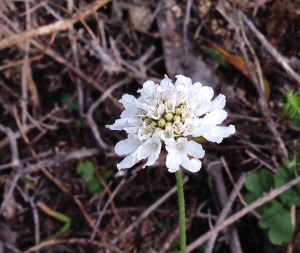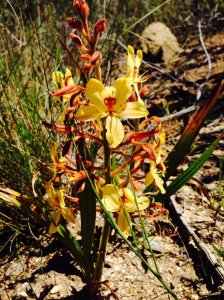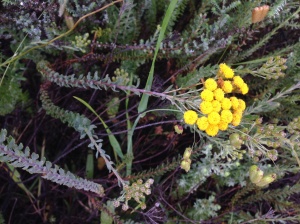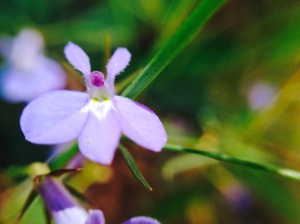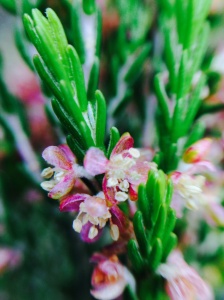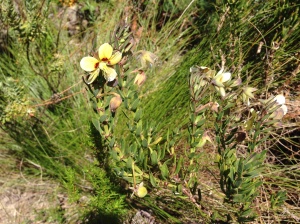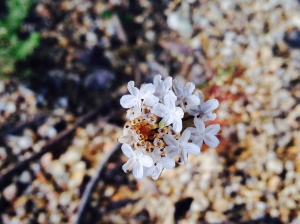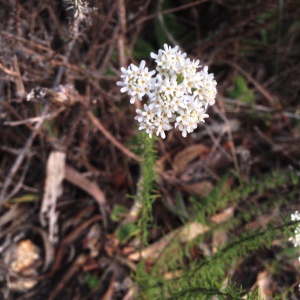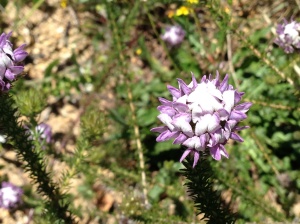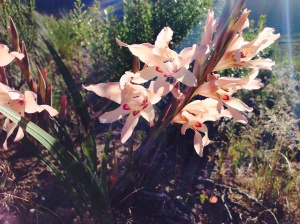Summer
As spring turns into summer the intense proliferation of new flowers on the mountain is dying back and I don’t really expect to see new things as frequently. So far there has been something new on each of the 50 runs that I’ve done since I started the blog. That won’t continue when the summer sun sucks every last bit of moisture out of the ground, leaving it rock hard, dry and dusty.
Summer running has quite a different feel to winter running. The wind for a start; when it’s hot and dry the famous Cape Doctor, the southeaster, howls over the mountain, shredding all but the hardiest plants in the garden. Suddenly it is clear why so many fynbos plants have tough spikey or needlelike leaves. They need them to survive the wind and the summer drought.
We did some quick runs with no photo stops last week on a route that we run quite frequently and then on Friday morning the dogs and I decided to go for a proper blogging run to the highest point of the farm where there a shady damp road that always has something interesting to look at. When it gets hot like this we seek out the few shady groves, damp areas and streams to get a break from the relentless morning sun. Maebh as she often does, posed for the camera. Perhaps not the best ever photo of her but the colour of her coat is gorgeous in the dappled light.
Just a little further on, caught in a pool of sunlight, stood this amazing flower. Although I can’t find it in the books, the slightly twisted sword like leaves tell me it is a kind of Gladioli and if I have some time I’ll hunt through the Fynbos Bulb Encyclopedia to see if any of the descriptions match this. I love this photo, the flowerhead in a pool of light against the dark shadow of the trees.
I’m never 100% sure that I have identified this flower correctly – there are 52 fynbos subspecies in the Metalasia family and the photos in the books are not great. I’ve published photos of them before and I couldn’t resist this one with its spectacular pink flower. I believe it’s Metalasia divergens.





